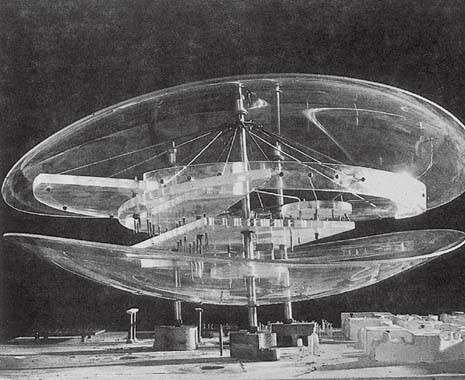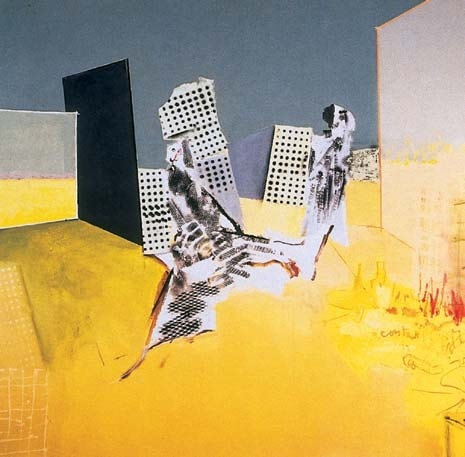Constant, New Babylon, una città nomade, Testo&Immagine, Torino, 2001 (96 pages, €12.39)
Open this book to page 61 and you will find an image that is almost certainly familiar: a fragment of Constant Nieuwenhuys’ New Babylon that Rem Koolhaas transferred, practically intact, to the plan of his Floriac house. When Koolhaas was still a journalist, he met and was deeply influenced by Nieuwenhuys, as his nearly plagiaristic citation demonstrates. Others who were surely affected by Nieuwenhuys’ work include Cedric Price and Archigram, not to mention Richard Rogers and Renzo Piano, who, when they designed the Pompidou Centre, assimilated a number of his ideas. This was architecture viewed as a catalyst for contemplative, pleasurable behaviour; that is, without any purely utilitarian motivation.
Nieuwenhuys ferociously attacked functionalism, Enlightenment myths, the rational city and Le Corbusier’s machine-for-living ideology. From 1956 to 1960 he was a fellow traveller of Guy Debord, following his experience with CoBrA; this group of post-war artists from various nations paved the way for Abstract Expressionism.
The Dutch architect and artist bore the imprint of Van Eyck’s teachings, the theories of Team X and the group centred around the journal Forum and above all the reading of Huizinga’s Homo Ludens. Nieuwenhuys proposed the non-permanent city and, consequently, the abolition of the organization of space to optimize processes, routines and habits. In his opinion, life was an endless journey through a world that changes so rapidly it always appears different. According to the architect, ‘Town planning as it is currently conceived is nothing more than the practical study of housing and traffic as isolated problems. The total lack of enjoyable solutions in the organization of social life prevents planning from being lifted to the creative level. This explains the squalid, sterile aspect of many districts’. Central to Nieuwenhuys’ poetic is the concept of situation; that is, ‘the building of a playful, transitory microenvironment for a single moment in the life of just a few people’. Its concrete apparition was his plan for an ideal city, conceived in detail and dubbed New Babylon; the selection of this name underscores Nieuwenhuys’ goal of muddling the languages, deconstructing acquired behaviours and escaping from tidy zoned towns.
The architect proposed to restore humanity to the nomad state of gypsies, melding architecture with the landscape in an endless, frontierless continuum. This openly opposed Heidegger’s ideas of space as a crystallized place, idolatry of the immobile and negation of the temporal dimension of the future.
Transformed into action, behaviour and practice, the new planning became central, towering over the other fine arts, which vanished into independent disciplines. In New Babylon anyone could become an artist; art was no longer considered an elite activity practised only in the ivory towers of galleries and museums. Nieuwenhuys’ creations are extremely attractive, thanks to their explosive imagination, rich colours and plastic power. For years they were practically unknown, but recently they have received critical attention from Libero Andreotti, Mirella Bandini and Mario Perniola as well as a major exhibition and catalogue, Constant’s New Babylon: The Hyper-Architecture of Desire, edited by Mark Wigley. Francesco Careri’s 96-page volume boasts rich, profound analyses. But it is outstanding for two other reasons: the many engrossing photos, such as the above-mentioned one on page 61, and the affectionate tone. This is explained by Careri’s involvement with Stalker, an interdisciplinary workshop founded after the student movement. Following in the footsteps of the Situationists and Nieuwenhuy, Stalker delves into the marginal spaces of today’s city.
Luigi Prestinenza Puglisi is an architect



